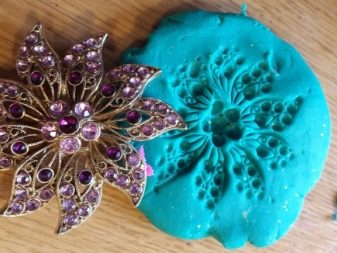Choosing stacks for sculpting

Plasticine is a material that has always been popular with children. And adults are not averse to kneading plastic mass in their hands. The more types of it can be found on sale, the more interesting and varied the work will be. But plasticine alone is not enough for the formation of beautiful handicrafts and work on the plane; you will also need tools that "dissect" the plastic mass.

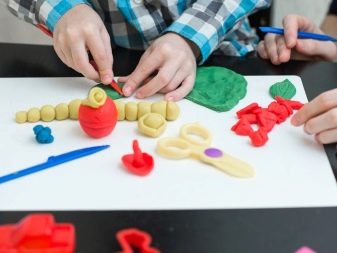
What it is?
Stacks are intended for sculpting and modeling plasticine figures and work in the technique of plasticineography. However, stacks are also used by those who are fond of polymer clay, who sculpt from wax and mastic. Stacks help to sculpt the craft, give it more precision and subtlety.

Stack kits (and they really can be sold as kits) are useful for specialists who will work with small parts. For example, create the exact texture of leaves, petals, tree bark, etc.


Stack is a sculptural term. It comes from the English steck - "stick".
The stack also has Italian roots; in the Mediterranean language, this is the name for an instrument made of palm wood, iron or ivory.
It looks like a graceful spatula used by sculptors.
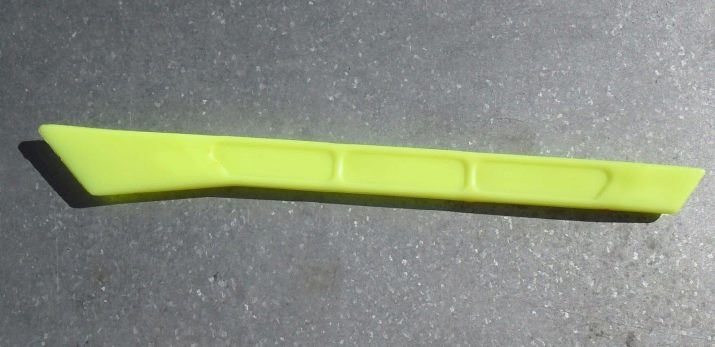
Many beginners who have just come into contact with sculpting, the question arises - are all these stacks really needed, because only with your fingers you can feel the correctness of sculpting. But experienced craftsmen only shake their heads at such statements: why reinvent the wheel and think how to make a notch here with a fingernail, and then seal it. The stacks have already been tested by time, only the best models have remained in active use, and therefore it is not worth buying stacks or not.
Cutting, compacting, making patterns and textures, and performing numerous manipulations with these handy knives, sticks and spatulas is much easier than without them. This means that you need to collect your own set, each author has his own box or container with such tools.


Someone uses one stack in sculpting and advises everyone to find one, but universal. Someone prefers to acquire an impressive set, because each instrument affects plasticine in its own way. Indeed, this is an individual choice, and there is no single rule of how much stack a person who sculpts should have.


Views
They are very different - both in the material from which they are made, and in form, and in functionality.
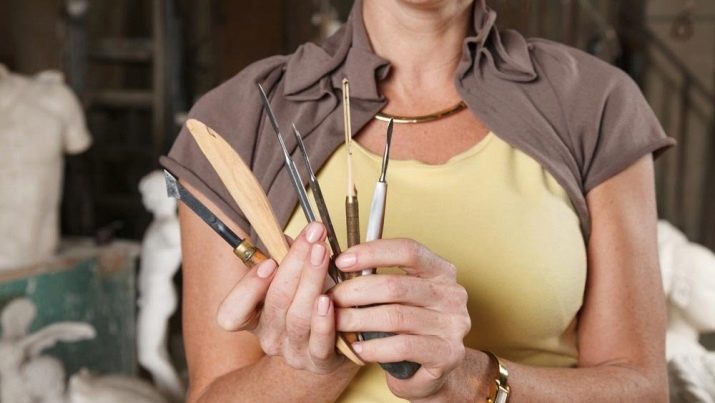
By material of manufacture
They can be sold in sets or individually.
Sometimes it is more profitable to purchase a set if the price hints at good savings.


Stacks are made from a variety of materials.
- Metallic. Professionals prefer to work with them. Not all and not always, but it is obvious that it is metal stacks that can most often be found in a sculptor's workshop. Such tools usually have two working ends with tips of different configurations. There may be a scapula on one tip and a ball on the other. Or, for example, a sharpened spear. That is, even if there are only 3 stacks in the set, then in fact there will be 6 tools, according to the number of working surfaces. Iron stacks are multifunctional, they work with plasticine, mastic and self-hardening masses.

- Wooden. They are often bought by those who want to use only eco-tools. Such stacks are usually made of hard wood, that is, beech, oak, birch, maple. And they also have two working sides, or rather, two tips. But such a tool is mainly designed to work with classical sculpture, and therefore finding small wooden stacks is a problem. And if a person is only engaged in plasticine modeling, they may be useless. For those who are also fond of modeling from paper pulp, wooden tools can be useful.
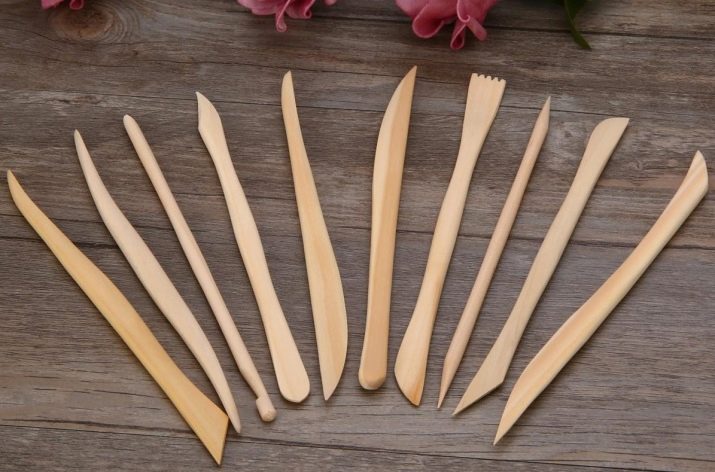
- Plastic. The most popular type for lovers of modeling, in particular, children. In a good plasticine set, there will definitely be a pair of stacks. But they are suitable not only for processing plasticine, but also for mastic, epoxy masses. But plastic does not combine with polymer clay, because the plastic literally softens and turns into sticky chewing gum.

- Silicone. These are stacks that have silicone tips. Unlike the same metal tool, this device leaves a soft, delicate mark on the surface of the material. This will help make transitions, smooth out the joints. Masters use such stacks-shapers, among other things, to indicate facial expressions on the faces of stucco figures.

Children are preferable to work with plastic tools that are difficult to injure.
Adults can try other options, "trying on" them under their own hand.


By size and shape
A rare pro does without a loop stack. This is a device with a wire, loop-shaped, very memorable tip. The loop in shape and thickness can be different, therefore it will help not only to cut off the excess plastic mass, but also to correct the shape as a whole.

Another popular type is stacks of balls (bulki / dots). These are thin sticks, usually made of wood or plastic, with a metal ball on the tip. The dimensions of this tool vary. Stacks are usually double-sided, so balls of different sizes will be at different ends of the fixture.
Such stacks are required when you need to create rounded shapes.

There are tools that can be just as useful as stacks. These tools complement the basic set of tools that help to sculpt no longer at the amateur level. These include knives, tweezers, rolling pins, ideally rolling out plastic mass.Or, for example, an extruder that optimizes the flatness of polymer clay sausages.


By the way, homemade tools can be cool stacks. If the author's imagination is well developed, he will figure out how to turn the required working element, performing this or that task on a plastic mass, into a full-fledged stack. For example, craftsmen make stacks from a wooden handle or heat shrink tubing.


How to choose?
Many people learn modeling on the Internet, video tutorials and step-by-step instructions are good teachers. And a person repeating someone else's experience looks, among other things, at the tools that the master uses.
When choosing a stack, you need to consider some points.
- And although a lot is purchased online today, ideally the stack should be held in hand, or even better - tried at work. This is why it is so useful to learn modeling in special classes, where the teacher provides students with materials and tools (often, but not always). There really will be enough time both to try and to understand whether this or that instrument is suitable for a particular person.
- Products should not show obvious signs of deformation. If the tool has cracks, irregularities, a noticeable factory defect, even the reduced price is unlikely to justify itself.
- For the first work, a child needs a couple of plastic stacks. One of them will be cutting, the second will be with a spade-shaped tip. If things go well, and the child develops in modeling, you can look for metal tools, etc.
Buying expensive, professional kits for newbies is not the smartest move.
Perhaps the modeling will not work out or the matter will not progress to serious work, and an expensive tool will lie in a desk drawer.

How to use it correctly?
And here, too, experience is more eloquent than any answer. You can get acquainted with the capabilities of the tool on simple balls of plastic mass: just roll several balls of different sizes and walk over them with the main stack, a knife, a spatula, a stack with a spherical tip, etc. Then, when making crafts, hands will already more confidently wield tools.
Practical tips will help you learn how to use stacks.
- The main universal stack is a straight stick with a pointed end. Professionals use a metal object, children often use a plastic one. A cylindrical stick is needed for rolling elements. For example, you need to roll out a round petal. A ball of plastic mass is laid out on the palm, and the stack rolls it out right on it. Very quickly, the element becomes flat and perfectly flat.
- If you need to make a petal in the shape of a heart (and there are, for example, a rose hip) the same basic stack can achieve this effect. First, a ball of plasticine is rolled out with the cylindrical part of the device, and then a small notch is made with the sharp part on the flat part. Subsequent rolling will complete the formation of the heart-shaped element.
- To make a piece of paper, the sharp part of the stack needs to form notches-notches on a flat, already rolled piece of plastic mass.
- To make a curved petal, used as a miniature stack, with a spatula tip. With this spatula, you need to walk over the element, and it will obediently bend. If you need to bend it more, then you will have to walk with the spatula a couple of times.
- The knife stack makes cuts well - just movement along the plane of the element. The same tool helps to raise the part, as if with a pick-up movement from below, and also to make indentations. The device is not sharp, it is difficult for them to get hurt.
- Ball stacks are also used continuously, since they can create the desired convexity. A stack with a ball diameter of 5-8 mm is considered the most popular. On the rolled part with a tool ball, you need to make a depression, that is, just roll the ball along the plane of the part. Several rolls, and the petal (or other element) becomes more realistic.




The devices need to be looked after, washed, cleaned, wiped with wet wipes and stored in one place, preferably inside a box or container (and not in a glass, which is fraught with injury).
And, of course, try to make stacks yourself. For example, fix on your favorite pencil, which fits so well in your hand, a bead that gives the desired round impression. Sometimes old jewelry becomes stamping for a drawing on plasticine: for example, a fragment of an earring in the form of a leaf can be glued to the base and then a leaf-shaped pattern can be made on the plasticine plane.
Good luck in modeling!
